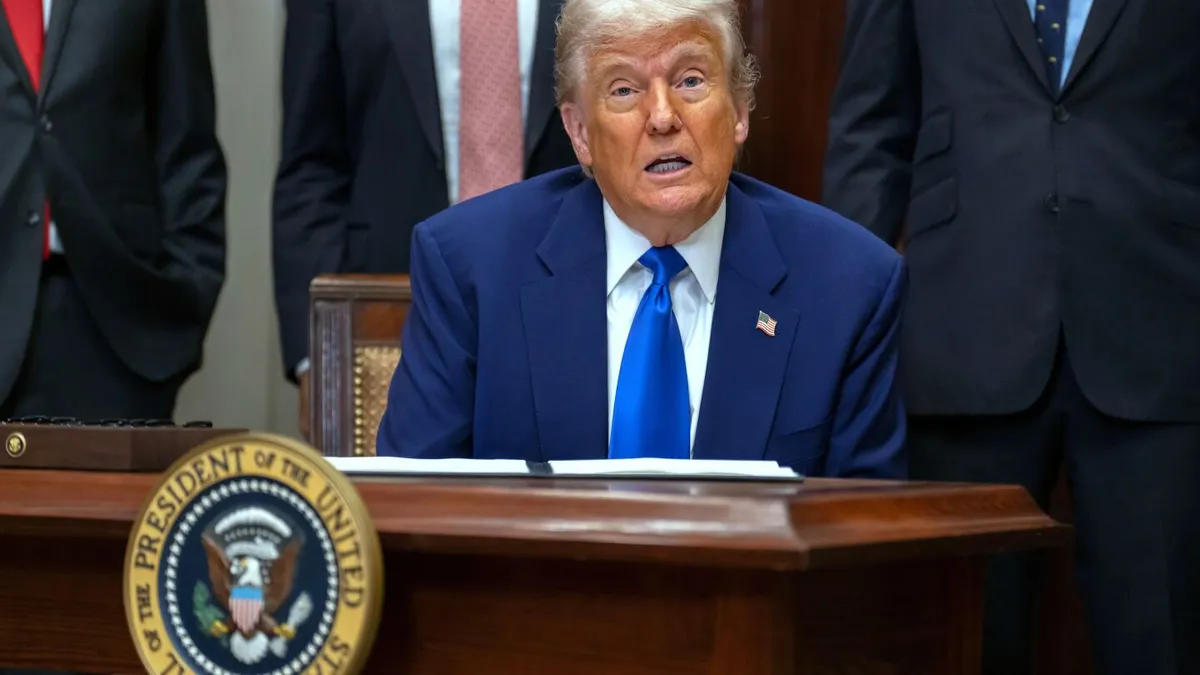
The recent agreement between President Donald Trump and China to temporarily reduce tariffs for 90 days has provided a semblance of relief to the global market. However, the ongoing uncertainty surrounding the trade war raises concerns about potential long-term damage. Following discussions in Switzerland, the Trump administration decided to lower the existing 145% tariffs on Chinese imports to 30%. In response, China has opted to decrease its retaliatory import taxes on American goods from 125% to 10%, setting the stage for further negotiations.
President Trump has hailed the de-escalation of the trade war as a significant victory. He announced plans to engage in discussions with Chinese President Xi Jinping to strengthen the financial relationship between the two largest economies in the world. Despite this temporary relief, the current tariff rates remain higher than they were when Trump assumed office, leading to unease among CEOs, investors, and consumers, who may now be less inclined to take risks.
The global economic landscape is unlikely to revert to pre-Trump conditions. Even with adjustments to tariff rates, it has become evident that most imports will incur a minimum tax of approximately 10%. This baseline rate has been applied to various countries during a 90-day negotiation period, especially following the market turmoil that stemmed from Trump's previous tariff announcements. The new 30% tariff on Chinese products includes 20% linked to China’s involvement in fentanyl production, alongside the previously established 10% baseline.
“We have many deals coming down the line,” Trump remarked, emphasizing that a 10% baseline will be maintained across most agreements. However, exceptions remain, particularly with sector-specific tariffs of 25% on goods such as autos, steel, and aluminum, alongside anticipated import taxes on pharmaceutical products.
According to Taisu Zhang, a law professor at Yale University, the recent chaos in trade negotiations has not been without merit. Both nations have been testing their respective economic strengths, with the U.S. emphasizing the significance foreign companies place on access to American consumers, while China showcases its resilience to external pressures. Zhang noted, “The best outcome from this agreement appears to be a more realistic understanding of each country’s economic capabilities and intentions.”
The stock market has responded positively to the news of reduced tariffs, indicating that Trump is aware of the need to maintain favorable conditions for financial markets. Following the announcement, the S&P 500 index surged by 3.3%, which hints at the market's validation of the administration’s decision to lower tariffs to facilitate ongoing negotiations.
Experts warn of a potential bullwhip effect, wherein the prospect of reduced tariffs could lead to a flood of shipping containers from China to the U.S. This rush to import goods may result in port congestion and increased transportation costs, mirroring the supply chain disruptions witnessed during the COVID-19 pandemic.
“They can now start shipping for the holiday season,” stated Michael Starr, vice president at logistics firm Zencargo, foreseeing a rush of orders in the next 90 days as businesses strive to avoid future tariff hikes.
While some may view the 90-day talks as a short-term positive, economist Justin Wolfers cautions against undue optimism. The past four months of the Trump administration have been marked by erratic tariff threats and an overall lack of clarity regarding future trade policies. “For as much optimism as there may be now, it would be foolish to be overly optimistic,” he noted.
Trump faces challenges as businesses adapt to the previous 145% tariffs. Companies may be hesitant to alter their strategies until more permanent policies are established. While the resilient job market has weathered previous economic pressures, persistent 30% tariffs could hinder business expansion and hiring efforts.
“Some businesses might manage with a 30% tariff for a while,” remarked Kevin Rinz, a senior fellow at the Washington Center for Equitable Growth. “But the uncertainty about future tariffs makes it challenging for firms dependent on imports from China.” Rinz's analysis suggests that the current trajectory could resemble a recession, despite the administration's premise of potential long-term gains from short-term pain.